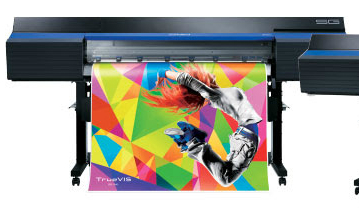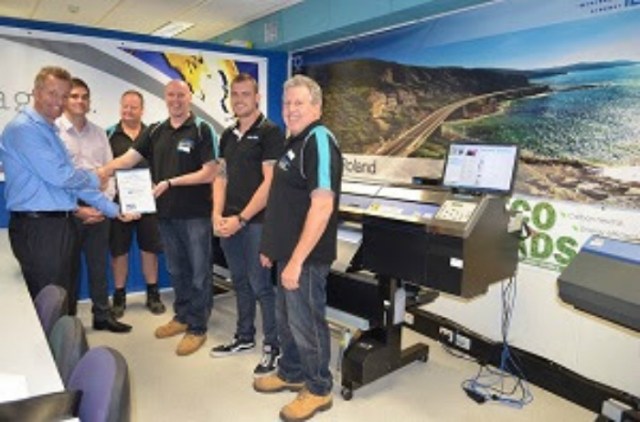
When was the machine launched?
The Roland 900XXL first appeared in 2004. Over the years, modifications have included a wider sheet size and the introduction of a reverse-sheet print system. Last autumn, Manroland introduced a perfecting version, set to launched locally in November.
Who is it aimed at?
The press is targeted at magazine and book printers looking to print paper and light carton in perfecting mode for signatures and covers, says Manroland Australasia head of sheetfed sales Simon FitzGerald. “It may also interest printers who might want to take short-run work away from web presses. It definitely fits into the 16pp web area,” he adds.
How quick is it and what’s quality like?
The press perfects at 10,000sph. FitzGerald says the build and print quality is as high as any other Manroland press, and there are tight tolerances for unit-to-unit register. To enable accurate front-to-back registration, the press uses the vendor’s exchangeable OptiPrint jackets, as opposed to the more typical textured cylinders. He adds: “What you are getting is web volume output at sheetfed quality. That has been a ‘nirvana’ for a long time.”
What’s its USP?
It’s the largest sheetfed perfector in the world and the only press capable of 64pp A4 production in one pass. According to FitzGerald, its productivity is equal to three conventional B1 perfecting presses, and this leads to significant overhead savings. Having no second pass means wash-up and makeready times are shorter, and there is a space saving due to fewer pallets and shorter throughput times. “Its USP is the unit cost of production,” says FitzGerald. “If you’re running a B1 long perfector, you’re printing 16pp production. This machine will do four times as much print at any one time. You can get 40,000 double-sided A4 sheets per hour on the floor. Yes, it’s slightly slower than a B1 perfector, but overall productivity is still
at least three times as high.”
How does the perfector work?
The perfector has double-sized cylinders, which help to keep the sheet stable and the turning process smooth. Built within the delivery section of the press is an inline slitter, and a slitting wheel runs against a steel band on the drum to do this while perfecting. FitzGerald says the advantage is that two stacks are delivered instead of one, assisting with the onward finishing of the sheet. “It means the post-press finishing is not as complicated because you are dealing with more manageable 24pp sections.” Manroland’s ink measuring and controlling system, ColorPilot, can be included inline before and after perfecting.
How easy is the machine to use?
FitzGerald says the operating system is the same as other Manroland presses; if you can run one, you can run them all. Color-Pilot also simplifies operation. FitzGerald says the level of automation on the press fits with Manroland’s ‘auto print’ philosophy. “When the job comes through to the console, all the colour values are already set. ColorPilot knows that, so as the job starts to print, it will automatically regulate the colour. It’s taken a lot of the difficult things away from the operator, because it all happens automatically.”
Have there been other modifications?
To cut makeready times the press is now equipped with Manroland’s automated plate-loading system (APL). APL has a four-axis robotic arm, which has a positioning accuracy of 0.01mm and can grip a set of up to four plates or, in case of a regional-edition change, just the plates that have been selected and prepared beforehand.
What level of service support is there?
Manroland offers ProServ, a customised service programme based on each user’s needs. Service contracts can range from a basic annual inspection and safety check, right up to maintenance supervision, production analysis and training. FitzGerald makes the point that Man-roland Australasia has grown from 12 staff two years ago to 50 today, “and 80% of those people are in service and support roles”. The 900XXL is equipped with TelePresence, a remote diagnostic service that can connect the press to Manroland’s support team. Built in to TelePresence is Maintenance Manager, a module that details and registers all the specific maintenance tasks that need to be performed on the press.
How much does it cost and how many have been sold?
FitzGerald says a 900XXL eight-colour perfector will come in under $8m. Five perfector models have been sold globally.
How many perfectors does Manroland expect to sell in the future?
FitzGerald appreciates that the B1 market is very mature in Australia. “There are a lot of older presses out in the marketplace. Typically Australian printers are looking to upgrade technology and downsize staff, so this press fits nicely into the philosophy of ‘why have three presses when you can have one’.” He adds that the 900XXL doesn’t just offer the potential for fewer presses, but could even mean fewer plants at big multi-site print groups.
Specs
Speed: Straight – 11,000 sheets per hour (12,000 optional),Perfecting – 10,000sph
Max sheet size:1,310×1,870mm
Max imaging area: 1,290×1,850mm
Units: 2-10
Stock thickness: 0.1-0.6mm (0.04-0.6mm optional)
Price: Eight-colour perfector: sub-$8m
Contact: Manroland Australasia (02) 9645 7900 manroland.com.au
Comment below to have your say on this story.
If you have a news story or tip-off, get in touch at editorial@sprinter.com.au.
Sign up to the Sprinter newsletter



